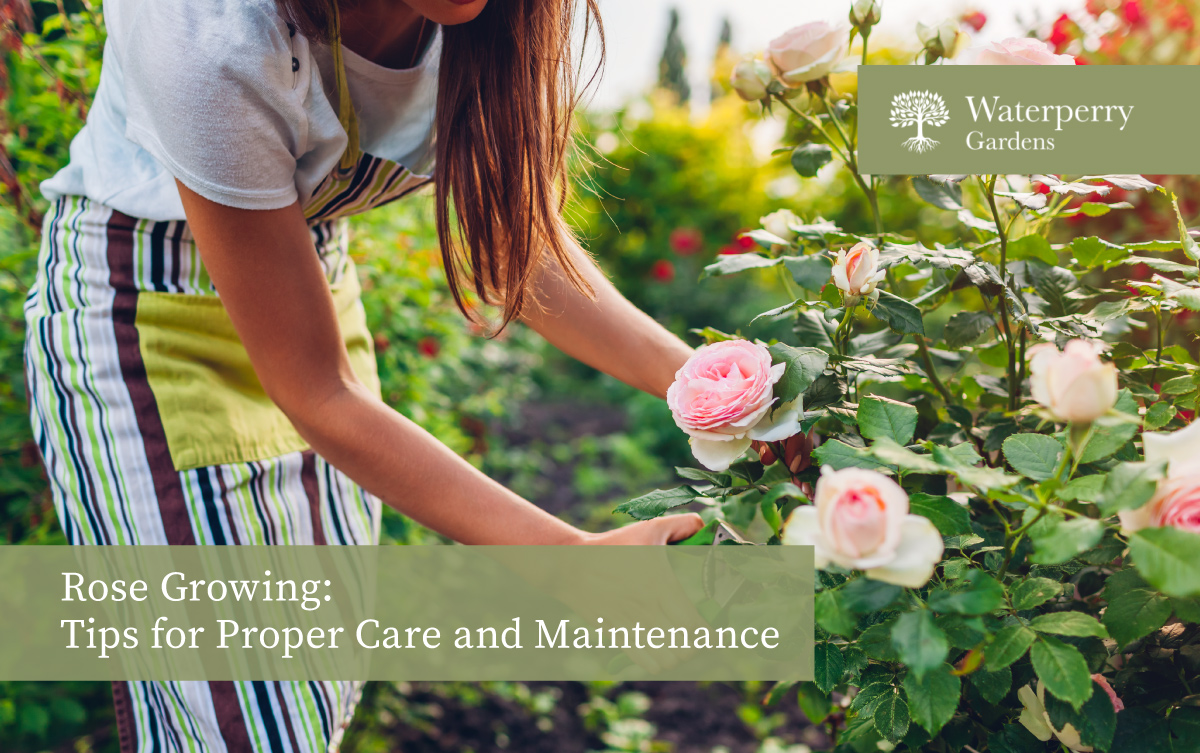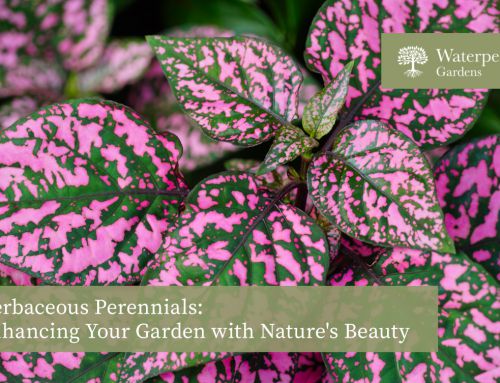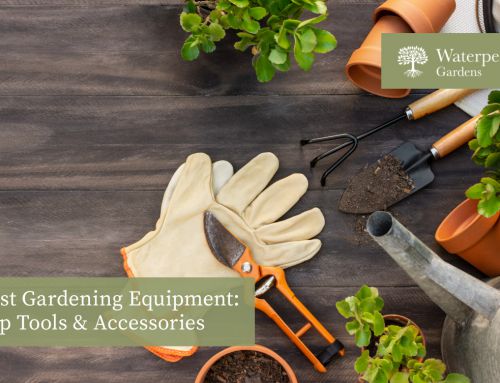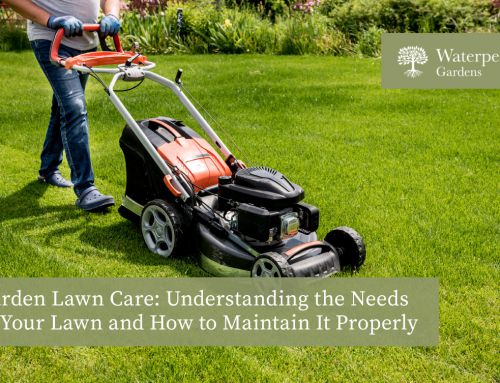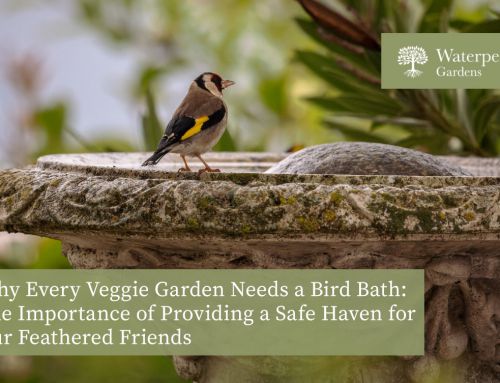Growing Roses: Tips for Proper Care and Maintenance
Growing roses can be a rewarding and fulfilling hobby, but it requires patience, dedication, and knowledge. For beginners, the process of rooting roses can be intimidating, but it’s an essential step in growing healthy plants. To root roses properly, choose a healthy cutting with no signs of disease or damage. Remove the leaves from the bottom of the stem to prevent rotting, and dip it in rooting hormone before planting it in well-draining soil.
However, growing roses is not just about rooting them properly. It’s also about taking your time and being patient with the process. Don’t expect instant results or rush through the steps. Instead, research best practices for your climate and soil type and invest time and effort into caring for your plants.
Starting small is also key to success when growing roses as a beginner. Focus on learning the basics of rose care by starting with just a few plants rather than trying to tackle a large garden all at once. This will help you avoid feeling overwhelmed while gaining experience and confidence.
Selecting and Preparing a Planting Site for Your Roses
Choosing the right location for planting your rose bushes is crucial to ensure their healthy growth and blooming. Roses require at least 6 hours of sunlight per day, so it’s important to choose a spot that receives adequate sunlight. When selecting a site, consider the size of the mature rose bush, as well as its shape and growth habits. You should also make sure that the location has good air circulation to prevent diseases.
Preparing the soil before planting is equally important. The soil should be free from weeds, rocks, or debris that can hinder root growth and development. It’s also essential to add organic compost or aged manure, to improve the soil drainage and fertility. Organic matter helps retain moisture in the soil while providing essential nutrients for plant growth.
Testing the soil pH level is another critical step in preparing your planting site for roses. Roses do prefer slightly acidic soil with the pH range of 6.0 to 6.5. Soil with this pH range allows roses to absorb nutrients more efficiently while preventing diseases caused by fungal pathogens.
To test your soil’s pH level, you can use a home testing kit available at most garden centres or online stores. Once you’ve determined your soil’s pH level, you can adjust it accordingly using lime or sulfur products available at your local garden centre.
When preparing your planting site for roses, it’s important to keep in mind that different types of roses have varying requirements regarding sunlight exposure and soil conditions.
For instance, hybrid tea roses prefer full sun exposure with well-drained soils rich in organic matter; floribunda roses thrive in partial shade with moist but well-drained soils; landscape shrub roses grow best in full sun exposure with average soils enriched with organic matter; climbing roses require full sun exposure and fertile soils enriched with organic matter.
It’s also worth noting that some rose varieties are more disease-resistant than others, making them ideal choices for beginner gardeners who may not have the experience to manage common rose diseases such as black spots, powdery mildew, and rust.
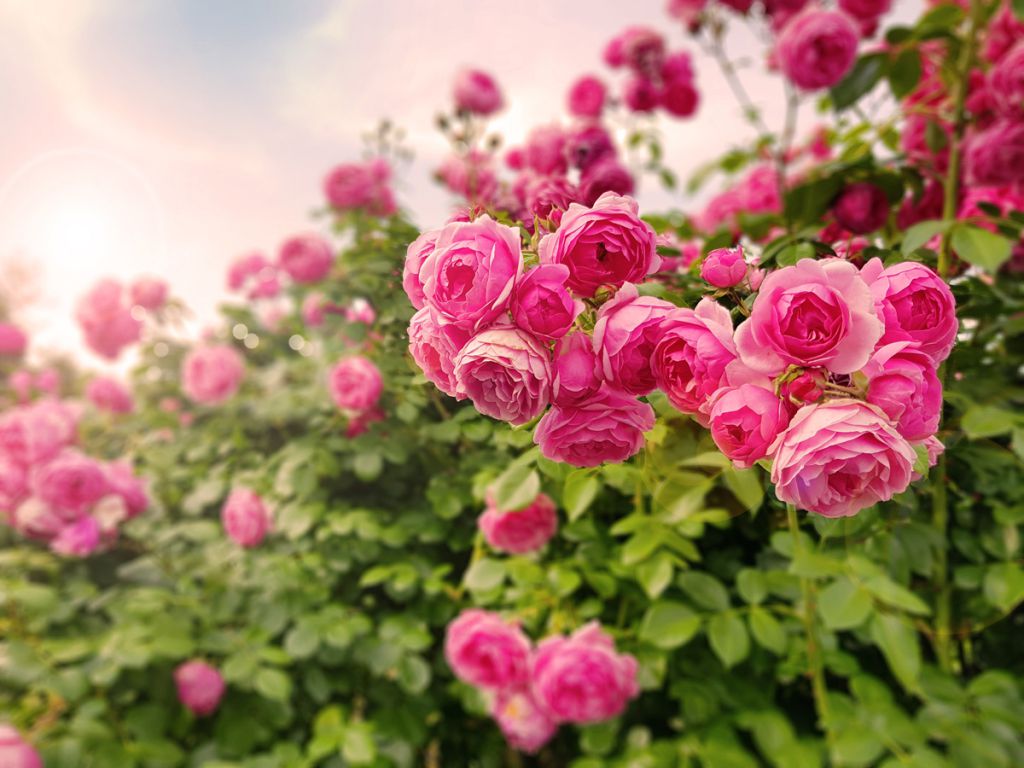
Planting Roses and Companion Plants for a Beautiful Garden
Choose the Right Location
Roses are stunning flowers that can add some elegance and sophistication to any garden. However, planting roses requires careful consideration of several factors, including location, soil type, and companion plants.
When planting roses one of the most important things to keep in mind is to choose the right location, and it’s essential to pick a spot that gets plenty of sunshine. Ideally, this should be an area that receives morning sun and afternoon shade.
In addition to sunlight, it’s also crucial to ensure the soil is well-draining and also rich in nutrients. Roses require fertile soil with good drainage to support healthy growth.
Consider Companion Plants
Planting companion plants alongside roses can help deter pests and attract beneficial insects. Good options include lavender, marigolds, and catmint. These plants not only complement the beauty of roses but also provide numerous benefits.
Lavender has a calming effect on both humans and insects alike. It repels harmful pests like aphids while attracting beneficial ones like bees and butterflies that help pollinate your garden.
Marigolds have a very strong scent that can repel nematodes (microscopic worms) from attacking rose roots while also attracting ladybugs which eat aphids. Marigolds contain a compound called thiophene that repels aphids and other insects.
Catmint has a similar effect as lavender in repelling pests while attracting bees for pollination.
Garlic – planting garlic around your roses to repel pests naturally, it also contains sulfur compounds that deter spider mites and thrips.
Prune Roses Regularly
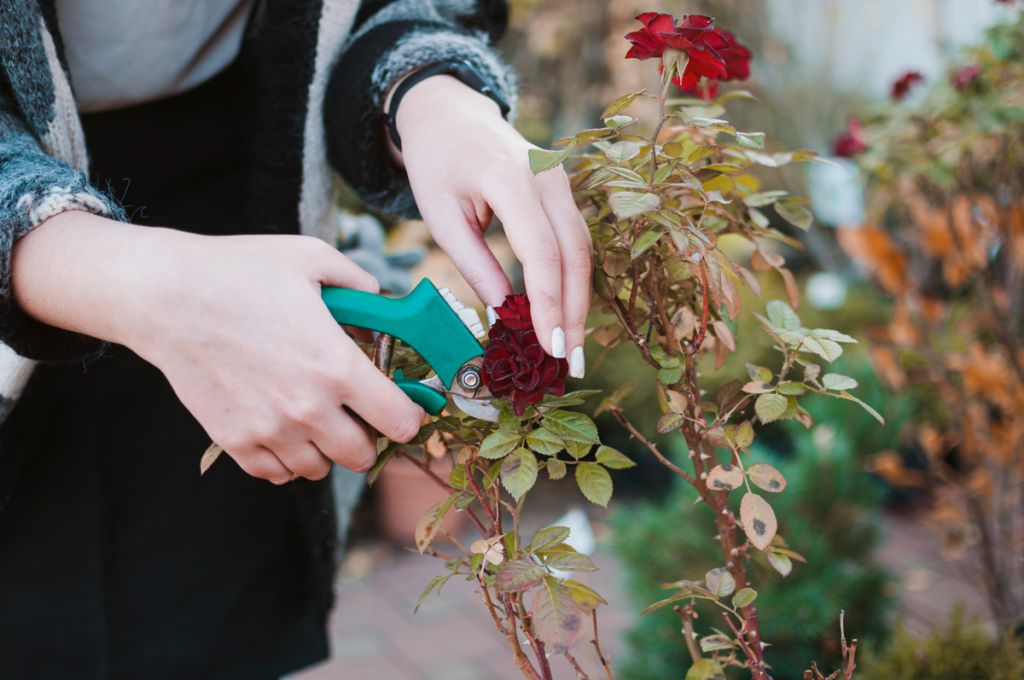
Pruning is an important part of maintaining healthy rose bushes. It promotes healthy growth by removing dead or diseased wood while encouraging more blooms by trimming backcrossing branches.
It’s always better to prune in late winter or early spring before new growth appears. This will give you ample time to shape your rose bushes into their desired form without harming new buds or flowers.
When pruning your roses, make sure you use sharp clean pruning shears to avoid damaging the plant. Cut back any dead or diseased wood, and trim back any crossing branches.
Feeding Your Roses: Fertilisers and Nutrients
Choose a Balanced Fertiliser
Choosing the right fertiliser is crucial for their growth and overall health. A balanced fertiliser with equal amounts of nitrogen, phosphorus, and potassium (N-P-K) is ideal for providing the necessary nutrients for healthy growth. Nitrogen promotes leafy growth, phosphorus encourages strong root development and flower production, while potassium helps with disease resistance.
It’s essential to read the label carefully before purchasing any fertiliser. Look for one that has an N-P-K ratio of 10-10-10 or 12-12-12. These ratios indicate that the fertiliser contains equal amounts of each nutrient.
Apply Fertiliser at the Right Time
Timing is everything when it comes to fertilising your roses. Apply fertiliser in the early spring before the new growth appears and again in late spring or early summer after the first flush of blooms. This timing ensures that your roses receive adequate nutrients during their active growing season.
It’s best to apply fertiliser when the soil is moist but not waterlogged. Watering your roses a day before applying fertiliser can help ensure that they absorb the nutrients properly.
Use Organic Fertilisers
Organic fertilisers like compost, manure, and bone meal are excellent alternatives to synthetic fertilisers. They provide slow-release nutrients that improve soil health and encourage beneficial microorganisms.
Compost is generally rich in organic matter and can provide a balanced mix of nutrients, making it an excellent choice for feeding your roses. Manure also contains essential nutrients like nitrogen, phosphorus, and potassium but should be well-aged before use to prevent the burning of roots.
Bone meal is high in phosphorus and helps promote strong root development and flower production. It’s important to note that organic fertilisers take longer to break down than synthetic ones; therefore, you may need to apply them more frequently throughout the growing season.
Watering Your Roses for Optimal Growth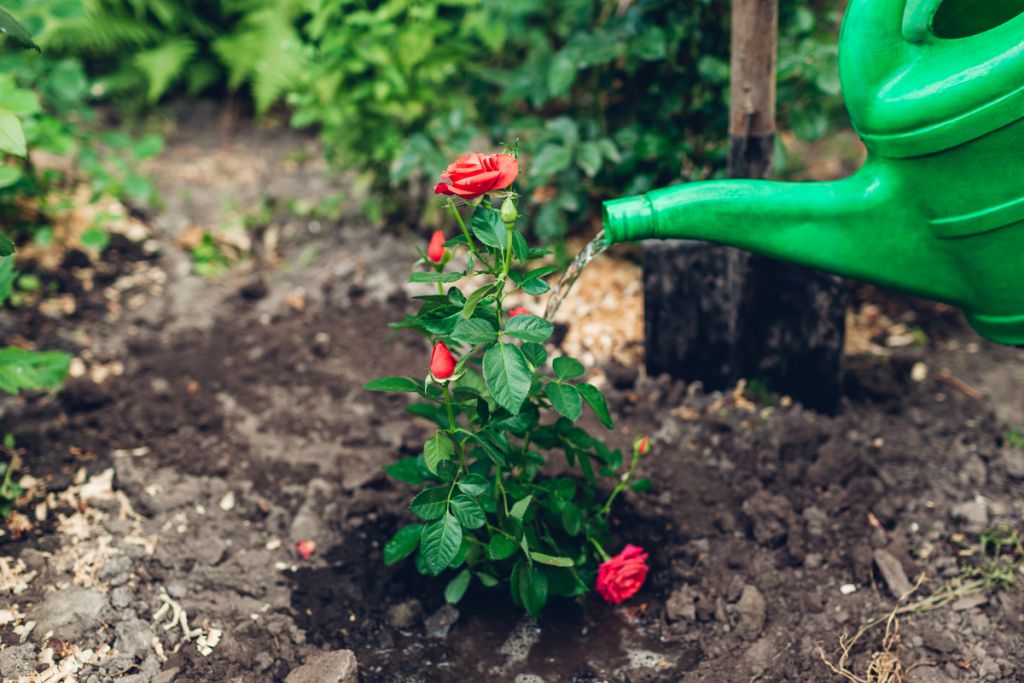
Watering your roses is an essential thing you can do to ensure their optimal growth. Roses need at least an inch of water per week, so make sure to water them deeply and regularly. However, it’s important to avoid getting the leaves wet, as this can lead to fungal diseases.
When watering your roses, it’s best to do it early in the morning or late in the evening when temperatures are cooler. This will help prevent evaporation and ensure that your plants get enough moisture throughout the day.
Soaker type hoses and drip irrigation systems are great for roses because they deliver water directly to the roots, minimising evaporation and reducing the risk of fungal diseases. When using a soaker type hose or drip irrigation system, make sure that the water is reaching all areas around the base of the plant.
Avoiding Overhead Watering
Another way to prevent the spread of fungal diseases is by avoiding overhead watering. Watering from above can cause water droplets to sit on the leaves and create a moist environment that encourages fungal growth.
Mulch Around Your Roses
Mulching around your roses helps to retain moisture in the soil, which is especially important during hot, dry weather. Use organic mulch like shredded leaves or bark chips. This will also help suppress weeds and keep your garden looking neat.
Protecting Your Roses from Pests and Diseases
Identifying Common Pests and Diseases That Attack Roses
Roses are beautiful, delicate flowers that require a lot of care and attention. Unfortunately, they are also prone to pests and diseases that can damage or even kill them if left untreated. The most common pests that attack roses include aphids, thrips, and spider mites.
Aphids are small insects that feed on the sap of the rose plants. They are usually found under the leaves causing stunted growth, distorted leaves, and yellowing of the foliage.
Thrips are tiny insects that can feed on the buds and flowers of roses. They cause discolouration and distortion of petals, as well as premature dropping of flowers.
Spider mites are another common pest that attacks roses. These tiny arachnids suck the sap from leaves, causing them to turn yellow or brown.
Controlling Pests with Insecticidal Soap or Neem Oil
If you notice any signs of pest infestation on your roses, it’s important to act quickly to prevent further damage. One effective way to control pests is by using insecticidal soap or neem oil. Insecticidal soap works by suffocating the pests, while neem oil disrupts their life cycle.
To use insecticidal soap, mix 2-3 tablespoons in a gallon of water and spray it directly onto the affected areas of your rose plant. Be sure to cover both sides of the leaves thoroughly for maximum effectiveness. Repeat this process every 7-10 days until all signs of infestation have disappeared.
Neem oil can be applied in a similar manner but requires a higher concentration – around 1 tablespoon per quart of water. It’s important to note that neem oil should not be used during hot weather as it can burn your plants.
Preventing Diseases like Black Spot, Powdery Mildew, and Rust
In addition to pests, roses are also susceptible to a variety of diseases such as black spot, powdery mildew, and rust. These diseases can cause defoliation, stunted growth, and even death if left untreated.
Black spot – this is a fungal disease that causes black spots on the leaves of roses, hence the name. It spreads quickly in warm, humid weather and can defoliate your plants if left unchecked.
Powdery mildew is another plant fungal disease that appears as a white powdery coating on the leaves of roses. It thrives in cool, damp conditions and can stunt the growth of your plants.
Rust is a fungal disease that causes orange or red spots on the undersides of leaves.
Removing Infected Leaves and Using Fungicides
If you notice any signs of these diseases on your roses, it’s important to act quickly to prevent them from spreading. Start by removing any infected leaves or stems from your plant using sterilised pruning shears. Be sure to dispose of them properly to avoid spreading the disease.
Next, apply a fungicide spray directly onto your rose plant according to the manufacturer’s instructions. Fungicides work by killing off any remaining spores or fungi on your plant’s surface.
Common Mistakes to Avoid When Growing Roses
Planting roses too late in the fall can result in insufficient root development before winter sets in.
Timing is everything. Planting roses too late in the fall can be a common mistake that many gardeners make. If you plant your roses too late, they may not have enough time to develop strong roots before winter sets in. This can leave them vulnerable to damage from freezing temperatures and frost heave.
To avoid this mistake, it’s important to plant your roses early enough in the fall so that they have ample time to establish themselves before winter arrives. Ideally, you should aim to plant your roses at least six weeks before the first hard frost of the season.
Neglecting to prune roses in the fall can lead to disease and pest problems in the spring.
Pruning is an essential part of rose care, and neglecting to prune your plants properly can lead to a host of problems down the line. One common mistake that gardeners make is failing to prune their roses in the fall.
If you don’t prune your roses back before winter sets in, dead or diseased wood can become a breeding ground for pests and diseases over the winter months. This can lead to problems with fungal diseases like black spot or powdery mildew come springtime.
Over-fertilising roses in the fall can cause excessive growth and make them more vulnerable to winter damage.
Fertilising your roses is important for promoting healthy growth and vibrant blooms, but over-fertilising can be just as damaging as under-fertilising. One common mistake that gardeners make is applying too much fertiliser too late in the season.
If you fertilise your roses heavily in the fall, it can cause excessive growth that may not have enough time to harden off before winter sets in. This new growth may be more susceptible to damage from freezing temperatures or other environmental stressors during the cold months ahead.
Failing to water roses adequately in the fall can leave them susceptible to dehydration and stress during the winter months. This can leave them vulnerable to damage from freezing temperatures or other environmental stressors over the winter months.
Leaving fallen leaves and other debris around rose bushes in the autumn can create a breeding ground for fungal diseases. As autumn sets in and leaves begin to fall from trees, it’s important to keep your garden tidy.
To avoid this mistake, be sure to rake up fallen leaves and other debris regularly throughout the autumn season.
Final Thoughts
Growing healthy roses requires a combination of consistent watering, pruning, and fertilising. By following these tips above and maintaining good gardening practices, you can enjoy beautiful blooms from your rose bushes year after year.
Growing roses properly may require some effort upfront but it will reward you with stunning blooms that will brighten up your day every time you look at them. So roll up your sleeves and get ready to embark on this rewarding journey of growing beautiful roses!


